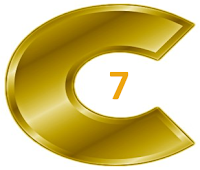There have been many reformers offering ideas for improving numeracy in our schools. Many of them advocate the use of specific commercial resources or explicit lesson plans – in short they offer recipes for teachers and schools to follow. The quietly spoken Alistair McIntosh (formerly Associate Professor at the University of Tasmania, Australia) avoided this path – yet identified some key ingredients of successful mathematics teaching. To create a narrative thread through his suggestions he nominated concepts starting with “C”.
For McIntosh the basic principles for improving numeracy teaching included;
· Conceptual understanding (rather than simple procedural competence).
· Connecting new mathematical concepts to known concepts and also to the “real world”.
· Communicating – students need to be able to describe, explain, justify, convince, hypothesise and prove.
· Consolidating – ideas need to be revisited, used in practical settings, implanted in games where possible, required skills need to be developed and establish in the mind. This should not be confused with rote learning or memorisation tasks.
· Coordination – teaching is more effective if it is consistent, both within a classroom and within a school – especially at adjacent grades.
· Community of learners – as society changes so does the relevance of the curriculum. As a result teachers need to be aware of what is relevant, how technological and social advancement make new methods of teaching possible and of course, the needs of the learner need to be considered. So teachers are learning, not necessarily new numeracy concepts, but how to present and apply them in the real world.
· Curriculum – McIntosh supports the views expressed in the NCTM Principles and Standards for School Mathematics - the mathematics curriculum should be well articulated,
focus on important mathematics,
be coherent
and is much more than just a collection of activities.
I’ve taken the liberty of presenting some of the ideas in McIntosh’s brief paper in video form.
The strength of McIntosh’s ideas is their simplicity – he has provided a lens through which we can view our programs. By considering and including these aspects in our practice we can make progress towards improving numeracy in our schools.

I like seeing that the default display slide on the video is the one about being able to explain math, not just do it.
ReplyDeleteI've been reading a lot about programs that work. Some of them are "project based," "Problem-solving based," and others are scripted and structured, but the ones that are effective tend to mention, somewhere along the line, that a solid link in the brain is created between *language* and numbers.
Hi Sioux,
ReplyDeleteThanks for your comment – and I think you are right when you say effective programs have a language component. My own take on this is that language is a vehicle for expressing concepts. If we want our students to explore mathematics they need (eventually) to have a language that allows for that. I have dim memories of reading a text years ago stating that language is based on symbols. We make an internal symbol for “tree” that we understand every time we use the word. However, in mathematics, this is often difficult as many of the concepts required describe a process or verge on the abstract – which makes it difficult to for young students to relate to the vocabulary as they can’t make a mental “picture” of what the maths means. So, to return to your original comment, effective teaching is going to include the language of mathematics as an aide to understanding.
Again, thanks for your comment.
(You’ve prompted me – I’ll try to track down the text and do a better job of explaining the language / mathematics relationship in a future post.